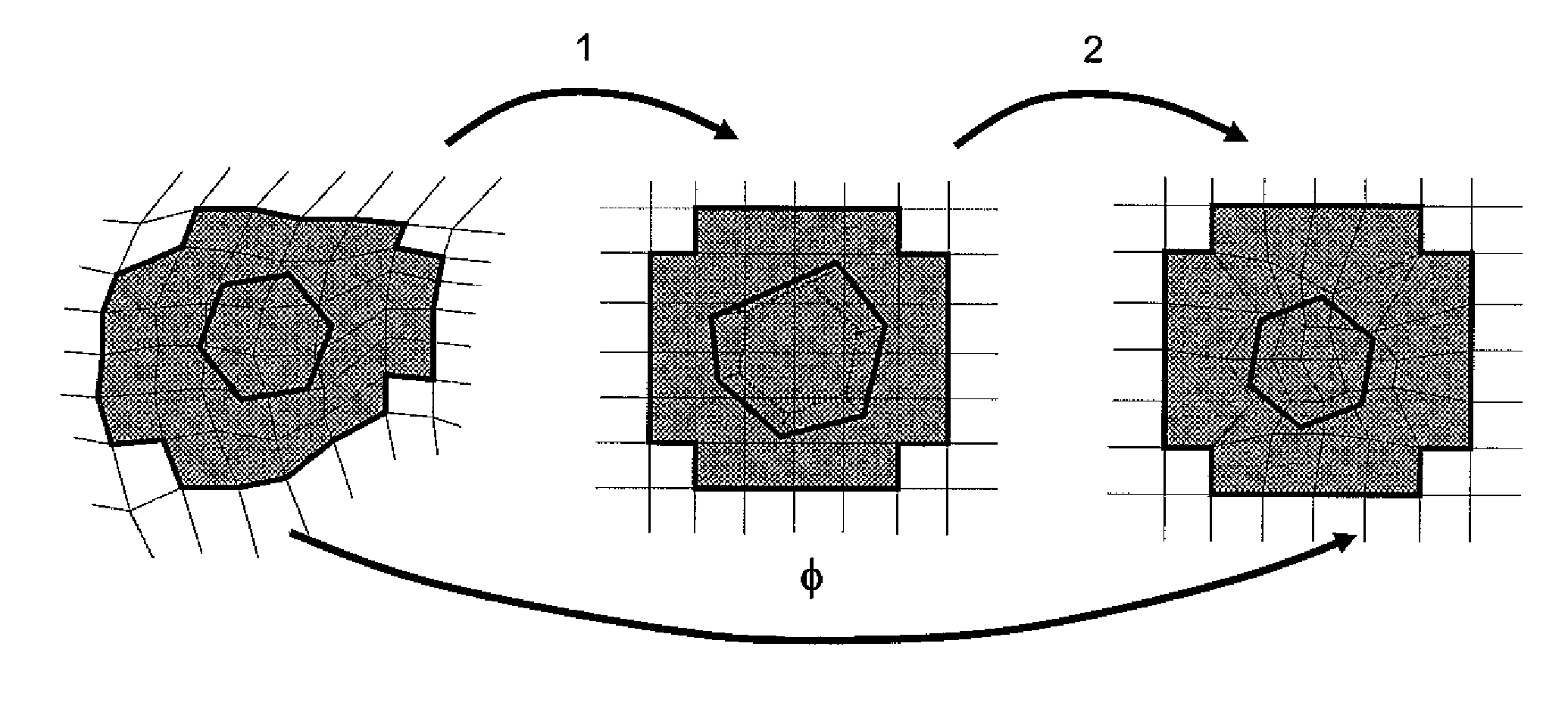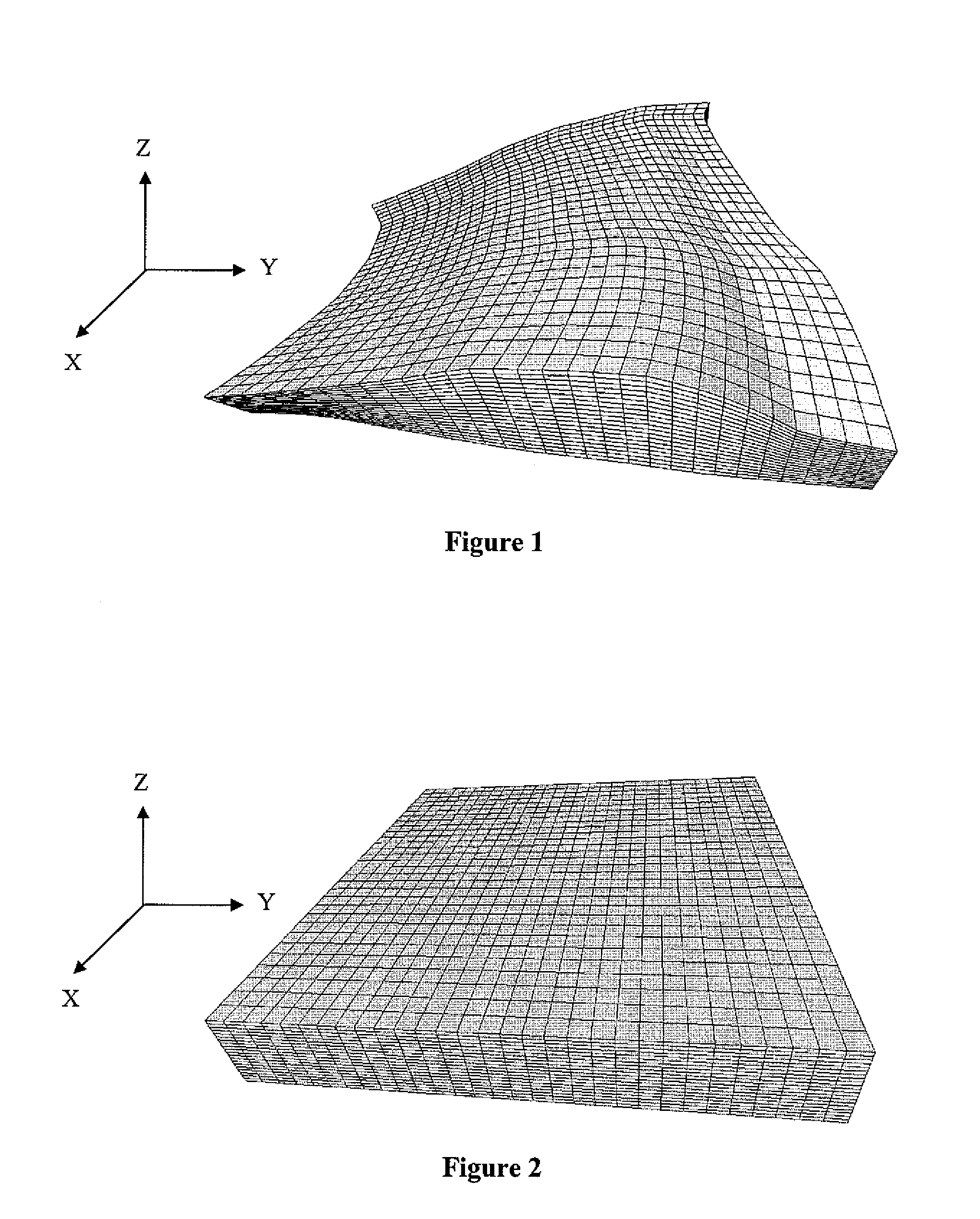Method for constructing a hybrid grid from a CPG type grid
a hybrid grid and grid type technology, applied in the field of fluid flow study, can solve the problems of grids already showing their limits, grid rigidity that does not allow all the geometric complexity of geology to be represented, and the memory cost involved in the use of unstructured grids can become very penalized
- Summary
- Abstract
- Description
- Claims
- Application Information
AI Technical Summary
Benefits of technology
Problems solved by technology
Method used
Image
Examples
Embodiment Construction
[0045]The method according to the invention allows to generate a 3D hybrid grid allowing to take account of physical phenomena occurring close to geometric discontinuities, such as wells or fractures, during reservoir simulations. This grid is, on the one hand, suited to the complexity of the geometry of the geologic structure studied and, on the other hand, to the radial directions of flow in the vicinity of the wells, in drainage zones. In the petroleum sphere, it is also necessary for these grids to be admissible in the finite volume sense. To meet this condition, the grid must have the following properties:
[0046]discretization of the flow equations is carried out by two-point approximations. This implies that, through a single face, a cell cannot have more than one neighbouring cell. This property is known as conformity,
[0047]to express the pressure gradient along the normal to a face, a two-point approximation between the two adjacent cells is used (numerical schemes where the ...
PUM
 Login to View More
Login to View More Abstract
Description
Claims
Application Information
 Login to View More
Login to View More - R&D
- Intellectual Property
- Life Sciences
- Materials
- Tech Scout
- Unparalleled Data Quality
- Higher Quality Content
- 60% Fewer Hallucinations
Browse by: Latest US Patents, China's latest patents, Technical Efficacy Thesaurus, Application Domain, Technology Topic, Popular Technical Reports.
© 2025 PatSnap. All rights reserved.Legal|Privacy policy|Modern Slavery Act Transparency Statement|Sitemap|About US| Contact US: help@patsnap.com



